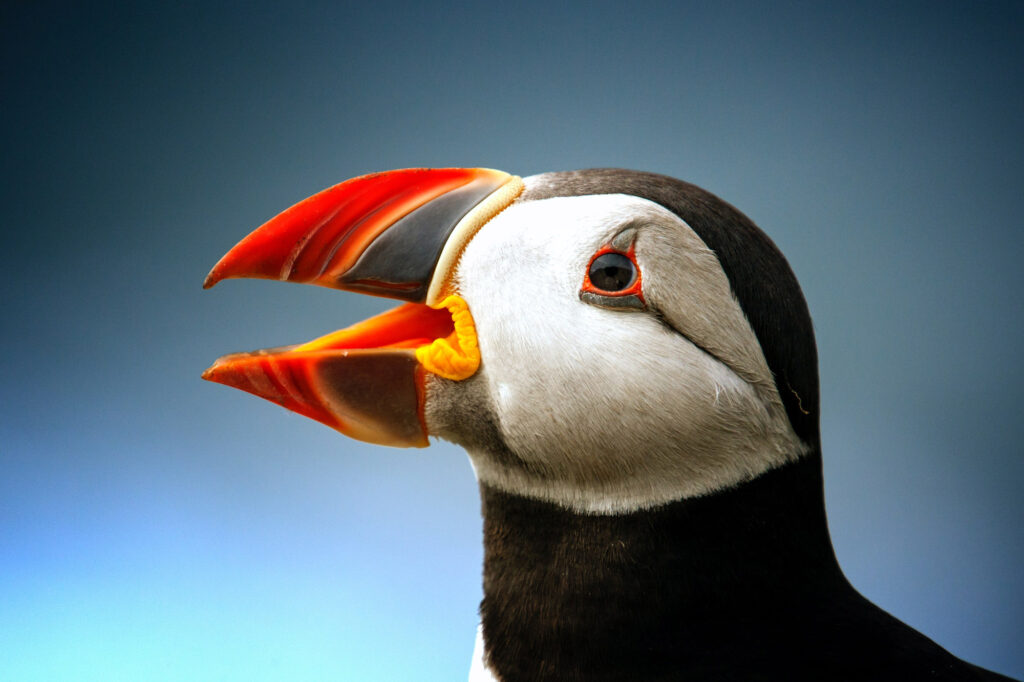The puffin is a beloved seabird that has captured the hearts of many with its distinctive and colorful appearance. However, there is much more to this bird than just its cute looks. Scientists have been studying puffins for years, unlocking the secrets of their behavior, diet, and habitat. In this article, we will explore the fascinating world of the puffin, examining what makes this bird so unique and why it is so important to study.
Appearance and Habitat:
To begin with, Puffins are known for their distinctive black and white feathers and brightly colored beaks, which can be orange, yellow, or red. They are relatively small birds, with a body length of around 10 inches and a wingspan of up to 21 inches. Puffins are found in the North Atlantic and Arctic oceans, typically nesting on rocky cliffs and islands. They are also migratory, spending the winter months out at sea.
Puffins Birds Behavior and Diet:
They are known for their distinctive diving behavior, which allows them to catch fish and other prey beneath the water’s surface. They are excellent swimmers, with powerful wings that allow them to “fly” through the water. Puffins are also social birds, often forming large colonies during breeding. During this time, they can be seen performing elaborate courtship rituals involving dancing, bill tapping, and other displays of affection.
Actually, the puffin’s diet consists mainly of fish, such as herring and sand eels, as well as squid and crustaceans. They can catch and hold several fish in their beaks at once, allowing them to bring food back to their nests to feed their young.
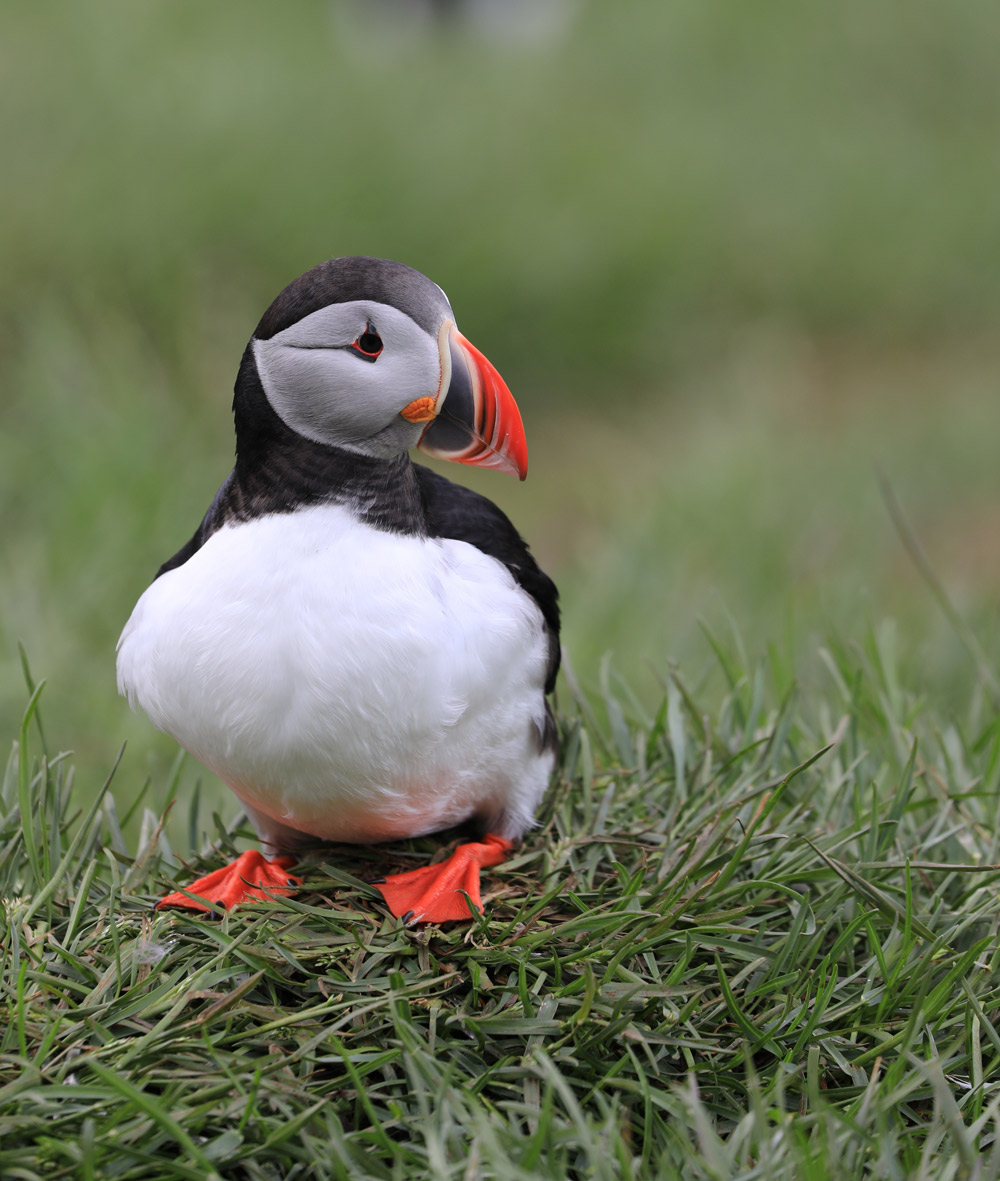
Breeding and Conservation of Puffins Birds:
Breeding is a crucial time for puffins, and scientists have been studying their breeding behavior and habitat for years. It typically lay a single egg in a burrow or crevice, which is incubated by both parents for around 40 days. After hatching, the chick is fed by its parents for several weeks until it can leave the nest and fend for itself.
Conservation efforts for puffins are ongoing, as the species faces several threats, including habitat loss, overfishing, and climate change. Scientists are working to understand these threats and develop strategies to protect puffin populations and their habitats.
Puffins as Indicators of Marine Ecosystem Health:
To pursue, Puffins are not just interesting and charismatic animals, but also serve as important indicators of the health of marine ecosystems. As predators at the top of the food chain, changes in the puffin population can indicate broader shifts in the oceanic food web. By monitoring puffin populations and studying their diet and behavior, scientists can gain insights into the health of the marine environment and the impact of climate change and human activities.
The Puffin’s Unique Adaptations:
Indeed, Puffins birds have many unique adaptations that have allowed them to thrive in their harsh marine environments. For example, their specialized beaks are designed to catch and hold fish, while their waterproof feathers protect them from the cold and wet conditions of the ocean. Their ability to dive and swim through the water is also a remarkable adaptation, allowing them to catch prey and evade predators.
Puffin Bird Research Techniques:
Scientists studying puffins birds use a variety of techniques to better understand these fascinating seabirds. These include satellite tracking, which allows researchers to follow the movements of puffins and understand their migration patterns and habitat use. Researchers also use cameras and observation stations to monitor puffin behavior and breeding success. By combining these techniques with genetic analysis, researchers can gain a comprehensive understanding of puffin ecology and evolution.
Puffin Tourism:
The Puffins birds are also popular among tourists and birdwatchers, who flock to areas where they can observe these charismatic birds in their natural habitats. In Iceland, for example, the puffin is a major draw for tourists during the summer months. However, it’s important to balance the economic benefits of tourism with the conservation needs of the puffin population. Responsible and sustainable tourism practices can help minimize the impact on the birds and their habitats.
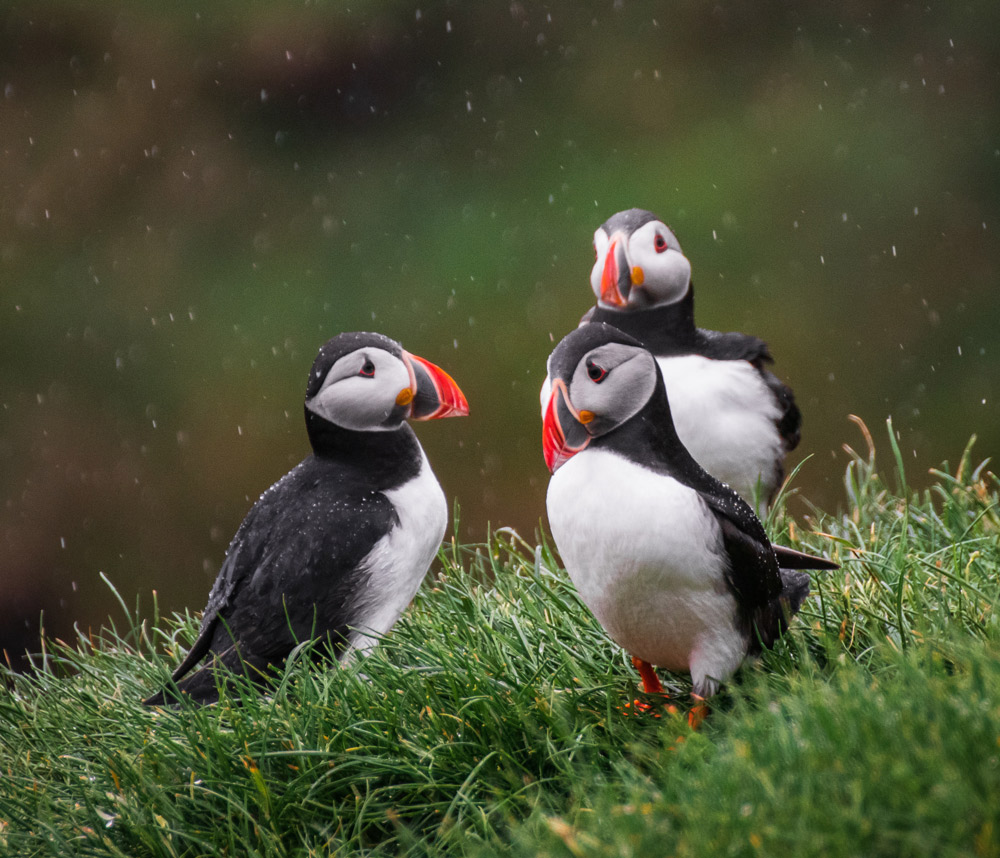
Future Research Directions:
While much has been learned about puffins birds, there is still much to discover about these fascinating seabirds. Future research could focus on the genetic diversity of different puffin populations, as well as the impact of pollutants and plastics on their health. Additionally, scientists could investigate the potential for restoring puffin habitats, such as by creating artificial nesting sites or reducing the impact of invasive species.
Where do live puffins?
Furthermore, Puffins have a wide range that includes the coastal waters of the North Atlantic and Arctic Oceans. They are found on rocky islands and cliffs in the northern parts of Europe, Asia, and North America. Some of the countries where puffins can be found include Norway, Iceland, the United Kingdom, Canada, and the United States. Puffins typically spend most of their lives at sea but come to land during the breeding season to mate, lay eggs, and raise their young.
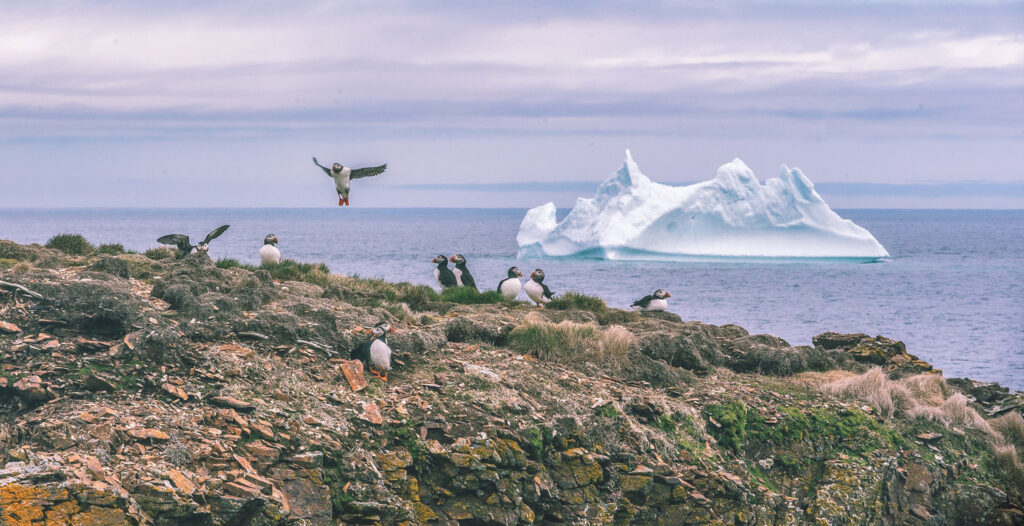
Fun facts about puffins birds?
Known as “clowns of the sea” due to their distinctive appearance with their brightly colored beaks and comical expressions.
Monogamous, meaning they mate with the same partner for life.
Excellent swimmers and can dive to depths of up to 200 feet to catch fish.
Can fly at speeds of up to 55 miles per hour.
They are not able to take off from the flat ground, so they need to launch themselves into the air from a high cliff or other elevated surfaces.
Special gland above their eyes that helps filter out excess salt from the ocean water they drink.
Use their beaks to carry multiple fish at once, allowing them to bring back a larger meal to their chicks.
Symbol of good luck in some cultures and are associated with love, loyalty, and fidelity.
Puffin birds are vulnerable to changes in climate and food availability, which can have significant impacts on their populations.
An important part of many coastal ecosystems, helping to regulate populations of fish and other marine organisms.
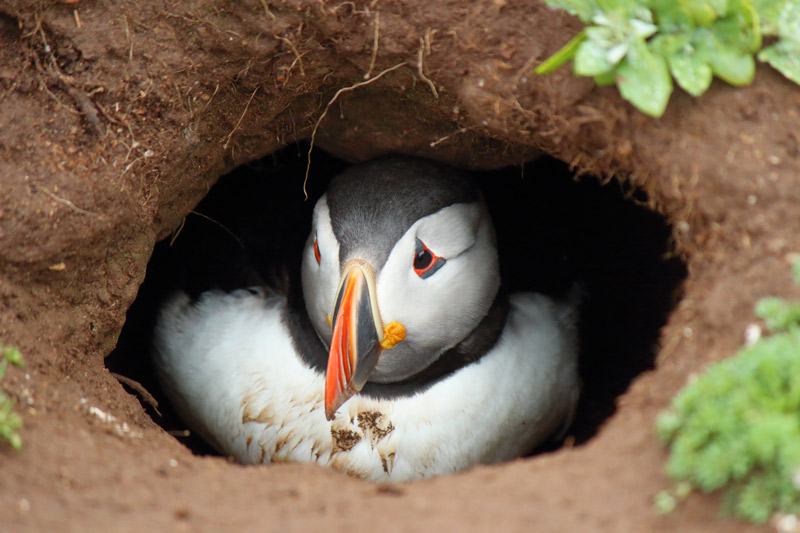
Are puffins birds easy to photograph?
Photographing puffins can be a bit challenging, but it is certainly possible with some patience and the right equipment. Puffins are relatively small birds, so it can be difficult to get close enough to them without disturbing them. However, many puffin colonies are located on cliffs or rocky outcroppings that provide a good vantage point for observing and photographing the birds from a distance.
To photograph them, a telephoto lens is essential, as it allows you to zoom in on the birds and capture details of their distinctive beaks and feathers. A tripod or other stabilizing device can also be helpful to ensure sharp, clear shots. Also, it’s important to be patient and wait for the right moment to capture the birds in action, such as when they are flying, diving, or carrying fish in their beaks.
In addition, it’s important to be respectful of the puffins and their habitats, as disturbing them can have negative impacts on their populations. It’s recommended to observe and photograph puffins from a distance and to avoid disturbing their nesting areas or interfering with their natural behaviors.
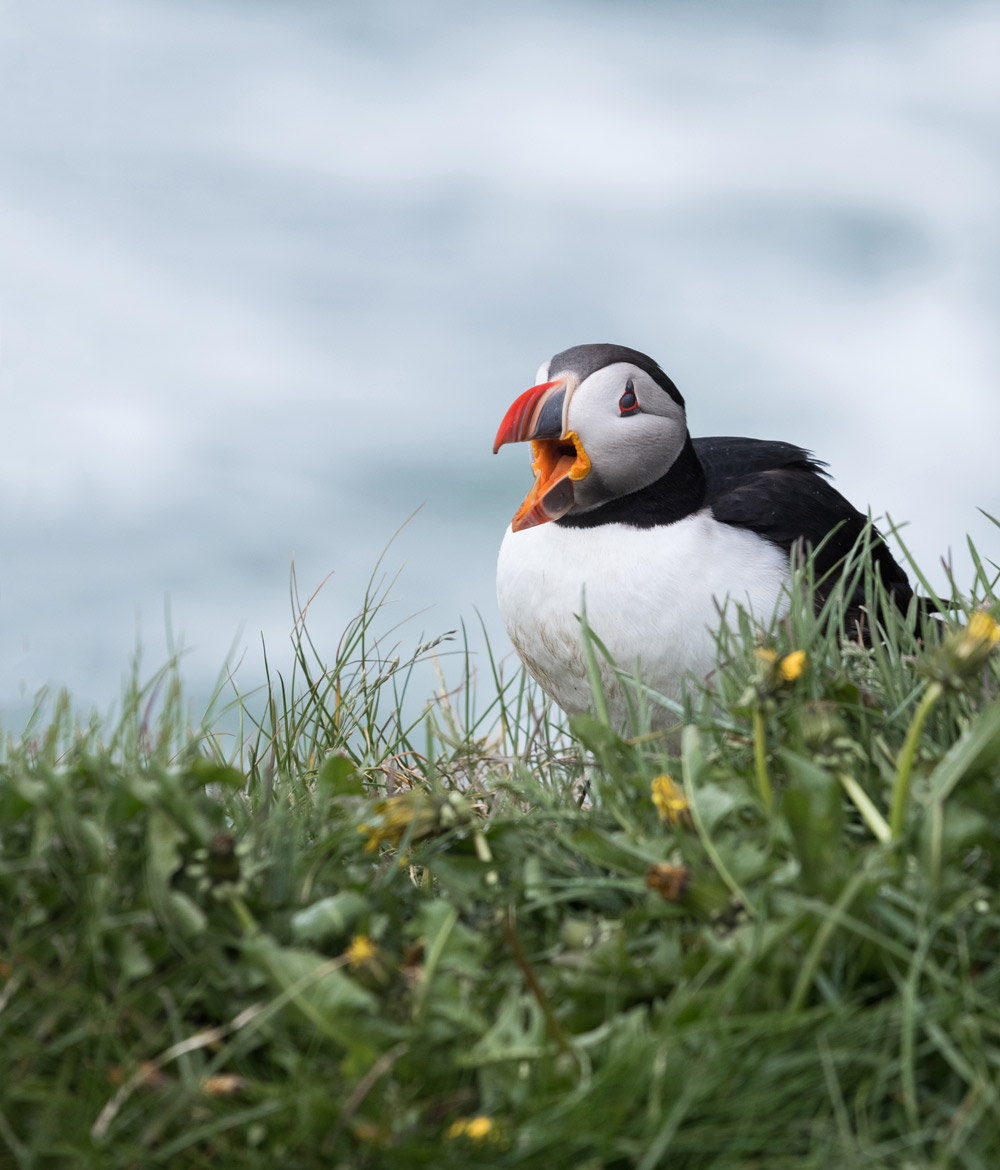
How to attract puffins birds?
Attracting puffins to a specific location can be difficult, as these birds are migratory and spend most of their lives at sea. However, if you’re in an area where puffins are known to nest or forage, there are some things you can do to increase your chances of spotting them:
Visit during the breeding season: Puffins come to land during the breeding season, which typically lasts from late spring to early summer. This is the best time to spot them on land.
Look for nesting sites: Puffins nest in burrows on rocky cliffs or islands. Look for areas with steep cliffs and lots of vegetation, as these can be good indicators of nesting sites.
Use binoculars or a spotting scope: Puffins are relatively small birds, so it can be difficult to see them from a distance. Using binoculars or a spotting scope can help you spot them more easily.
Be patient: They spend most of their time at sea, so it can take some time to spot them on land. Be patient and keep a lookout for any signs of puffin activity.
Avoid disturbing the birds: Puffins are sensitive to disturbance, so it’s important to observe them from a distance and avoid getting too close to their nesting sites. Using a zoom lens or binoculars can help you get a closer look without disturbing the birds.
Join a puffin-watching tour: If you’re having trouble spotting puffins on your own, consider joining a puffin-watching tour led by a knowledgeable guide who can take you to areas where the birds are more likely to be seen.
Are puffins birds endangered?
Some species of puffins are considered endangered or threatened due to various factors such as habitat loss, overfishing, pollution, and climate change. For example, the Atlantic puffin (Fratercula arctica) is listed as “vulnerable” by the International Union for Conservation of Nature (IUCN), while the horned puffin (Fratercula corniculata) and the tufted puffin (Fratercula cirrhata) are listed as “near threatened.”
The Atlantic puffin’s population has been declining in many parts of its range, including in Iceland, Norway, and the United Kingdom. This decline is attributed to factors such as the depletion of the puffin’s prey species due to overfishing, as well as changes in the ocean’s temperature and chemistry due to climate change.
Conservation efforts are underway to protect puffin populations, including measures such as establishing protected areas, reducing overfishing, and monitoring populations to track changes over time. Additionally, public education and outreach programs can help raise awareness about the importance of protecting puffins and their habitats.
Can puffins birds fly?
Yes, puffins are capable of flight. While they are primarily adapted for swimming and diving underwater, puffins are also capable of flying long distances to reach their breeding and foraging areas.
For instance, Puffins have a distinctive flying style that involves rapid wing beats and short glides over the water’s surface. They are agile flyers and can reach speeds of up to 55 mph (88 km/h) in flight. However, their wings are relatively small compared to their body size, making flying more energy-intensive for puffins than for other birds.
They typically fly between their nesting sites on cliffs and islands and their foraging areas in the open ocean. They may also fly long distances during migration, which takes place primarily in the fall and winter months.
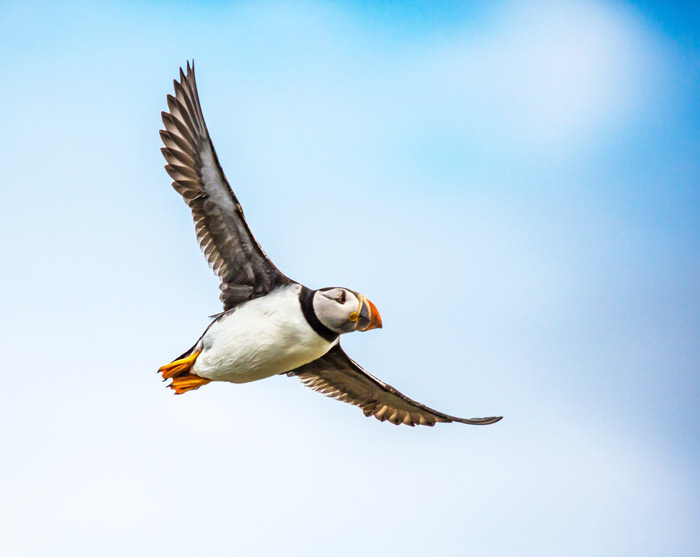
How many eggs do puffins birds have?
During their breeding season, Puffins typically lay one egg, although some species may occasionally lay two eggs. The egg is laid in a burrow or crevice on rocky cliffs or islands, and both parents take turns incubating the egg for around 35-45 days until it hatches.
After hatching, the chick is cared for by both parents, who take turns feeding it with small fish such as sand eels and herring. The chick grows rapidly and will fledge, or leave the nest, after around 40-50 days, depending on the species.
To finish, Puffins have a relatively low reproductive rate, with most individuals only breeding once per year. This, combined with other factors such as habitat loss and overfishing, makes them vulnerable to population declines and highlights the importance of conservation efforts to protect these unique and charismatic birds.
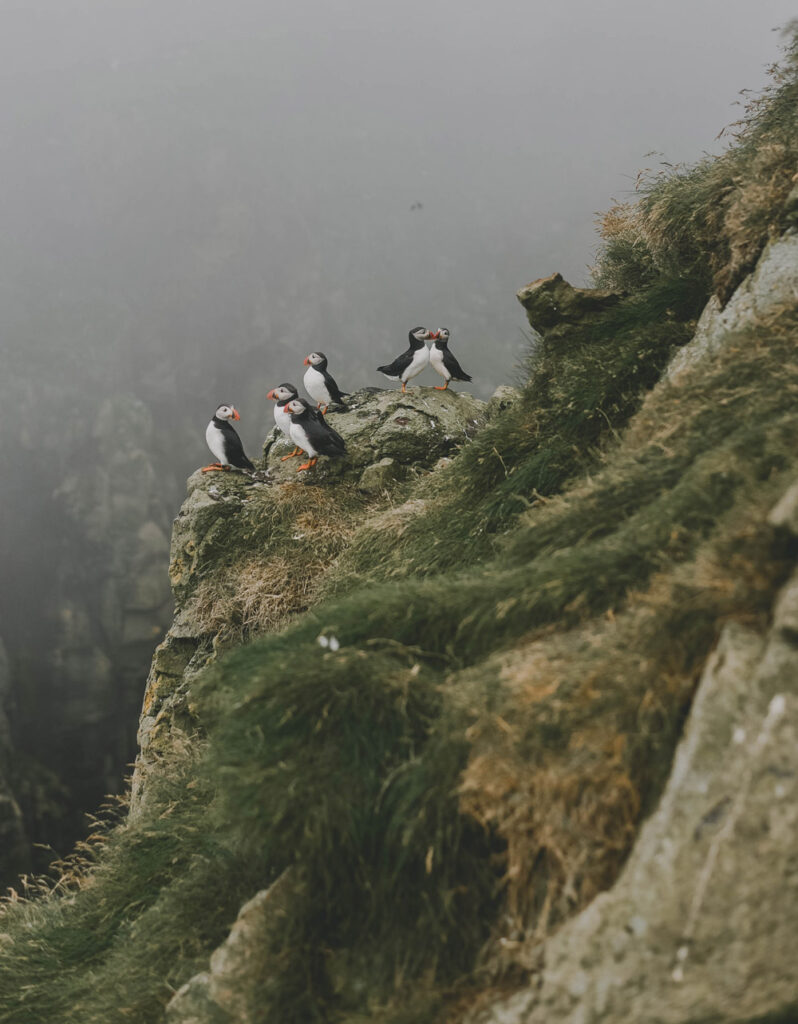
How long do puffins birds live?
Their lifespan is relatively long for a seabird, with some individuals living for up to 20-25 years in the wild. However, their lifespan can vary depending on factors such as habitat quality, predation, and human impacts such as pollution and climate change.
In fact, Puffins birds typically reach sexual maturity at around 4-5 years of age, after which they will begin breeding and raising young. When it’s their breeding season, puffins spend most of their time on land or on the water near their nesting sites. Outside of the breeding season, they may migrate long distances to find food in open ocean areas.
Studies of puffin populations have shown that survival rates can vary depending on factors such as population density and the availability of food resources. Some populations have experienced declines in recent years, which may be attributed to ocean temperature and chemistry changes, habitat loss, and other human impacts. Thankfully, conservation efforts are underway to protect puffin populations and their habitats, including measures such as establishing protected areas and reducing overfishing.
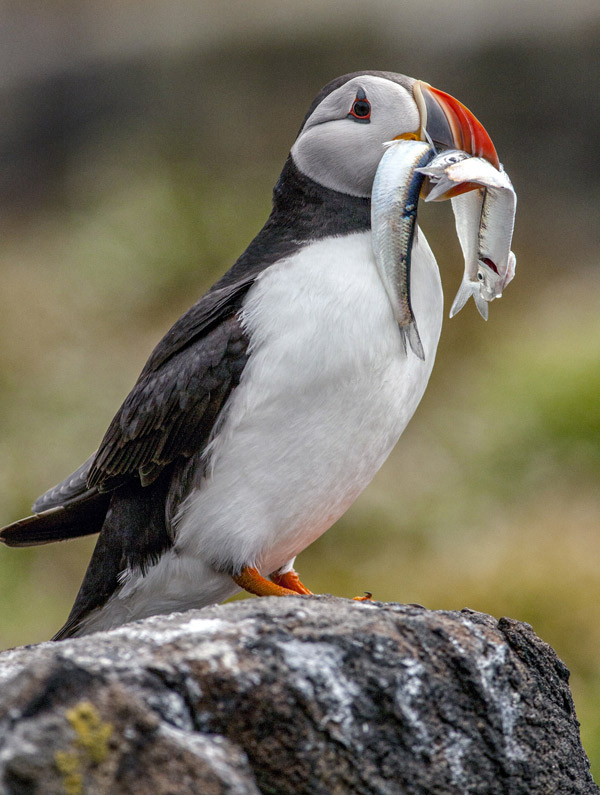
In conclusion, puffins birds are fascinating seabirds that are well-known for their colorful bills, unique appearance, and charismatic behavior. These birds are adapted for life at sea, with specialized features such as waterproof feathers, webbed feet, and a streamlined body shape that allows them to swim and dive underwater in search of small fish and other prey.
Puffins are found primarily in the North Atlantic and breed on coastal cliffs and islands. They typically lay one egg per breeding season and have a relatively long lifespan for a seabird, with some individuals living for up to 20-25 years. Conservation efforts are underway to protect puffin populations and their habitats, as these birds are vulnerable to population declines due to factors such as habitat loss, overfishing, and climate change.
WANT TO LEARN MORE? TAKE A LOOK AT THESE ARTICLES:
- The Pine Grosbeak
- The Scarlet Ibis
- The Scarlet Macaw
- Lovebirds
- The Female Cardinal
- The Great Egret
- The Great Blue Heron
- The American Robin
- The Northern Cardinal
- The Dark-Eyed Junco
- The Blue Jay
- The Gray Catbird
- The Tufted Titmouse
- The Red-winged Blackbird
- The Black-capped Chickadee
- The Evening Grosbeak
- The Common Starling
- The Kiwi Bird
- Wild Birds Unlimited

